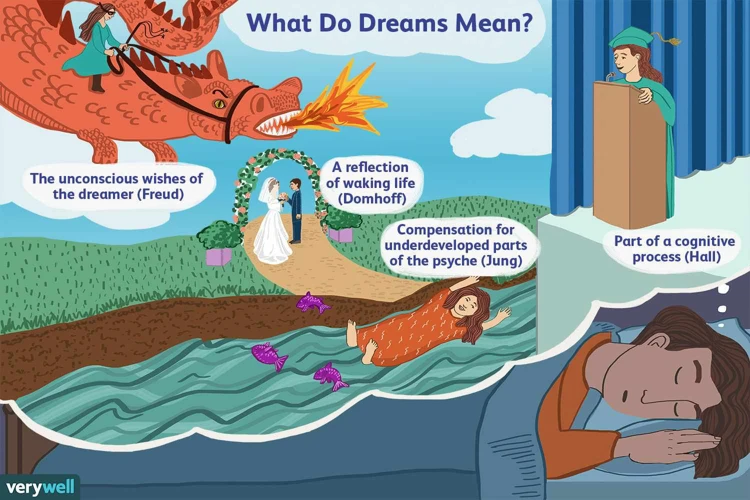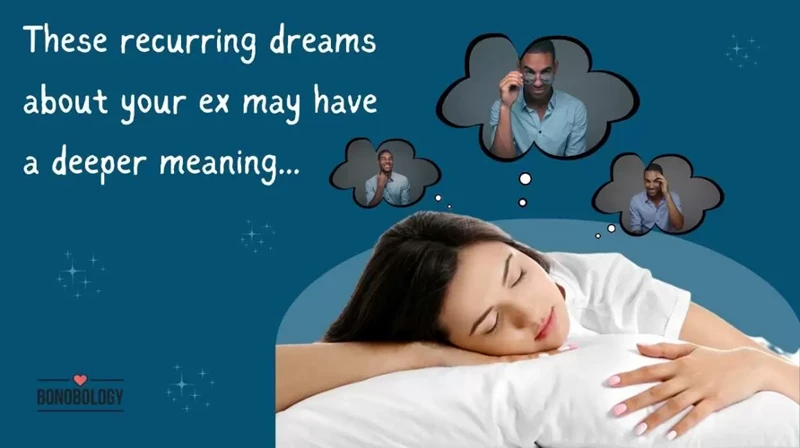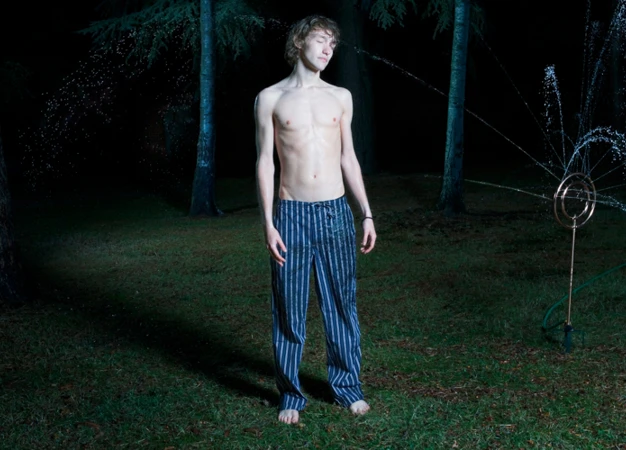Sleepwalking: Is It Possible to Act Out Dreams?
Have you ever wondered if it’s possible to act out your dreams while sleepwalking? Sleepwalking, also known as somnambulism, is a fascinating sleep disorder that affects a small percentage of the population. When someone is sleepwalking, they engage in various activities while still in a state of deep sleep. In this article, we will delve into the science behind sleepwalking and explore the intriguing relationship between dreams and sleepwalking. So, fasten your seatbelt and get ready for a journey into the mysterious world of sleepwalking!
What is Sleepwalking?

Sleepwalking, also known as somnambulism, is a complex sleep disorder in which a person engages in various activities while still in a state of deep sleep. It occurs during the non-REM sleep phase, usually within the first few hours of falling asleep. Sleepwalkers may perform simple actions like sitting up in bed or walking around the room, or they may engage in more complex behaviors such as cooking, driving, or even sleep talking. While sleepwalking, individuals are often unresponsive to external stimuli and may have a blank or glassy-eyed expression. It is important to note that sleepwalking is not the same as acting out dreams, as dreams occur during the REM (Rapid Eye Movement) sleep stage, while sleepwalking occurs during non-REM sleep. Sleepwalking episodes typically last for a few minutes to half an hour, but can vary in duration. Although the exact cause of sleepwalking is unknown, it is believed to be influenced by a combination of genetic, environmental, and physiological factors. Research has shown that sleep deprivation, certain medications, stress, and fever can increase the likelihood of sleepwalking episodes. If you’re interested in learning more about how sleepwalking affects dream quality, you can check out our other article on how sleepwalking affects dream quality.
The Science Behind Dreams

The science behind dreams is a topic that has fascinated researchers and scientists for centuries. Dreams occur during the REM (Rapid Eye Movement) sleep stage, which is characterized by rapid eye movements, increased brain activity, and vivid dreaming. During this stage, the brain is highly active, and it is believed that dreams serve various functions, such as memory consolidation, emotional processing, and problem-solving. Dreams can be influenced by our daily experiences, emotions, and thoughts, often reflecting our subconscious desires and fears. Some common themes in dreams include flying, falling, or being chased. Nightmares, on the other hand, are distressing dreams that evoke feelings of fear, anxiety, or terror. They can be influenced by stress, trauma, or certain medications. If you’re curious about the role of nightmares in sleepwalking, you may find our article on the role of nightmares in sleepwalking insightful. Ultimately, the study of dreams and their connection to sleepwalking continues to unravel the intriguing mysteries of the human mind during sleep.
REM Sleep and Dreams
During the sleep cycle, we experience different stages of sleep, and one of the most intriguing stages is REM sleep, which stands for Rapid Eye Movement sleep. This stage is characterized by rapid eye movements, increased brain activity, and vivid dreaming. It is during REM sleep that dreams are thought to occur. REM sleep cycles typically occur multiple times throughout the night, with each cycle lasting for about 90 to 120 minutes.
Dreams experienced during REM sleep are often vivid, sensory-rich, and emotionally charged. They can involve fantastical scenarios, familiar settings, or a combination of both. REM dreams can take various forms, including ordinary dreams, lucid dreams, and nightmares. Ordinary dreams involve narratives or scenarios that may or may not reflect real-life experiences or desires. Lucid dreams, on the other hand, are dreams in which the dreamer is aware that they are dreaming and may have some control over the dream environment or storyline. Nightmares, as the name suggests, are distressing or frightening dreams that can cause feelings of fear, anxiety, or unease.
When it comes to sleepwalking, it is important to note that it occurs during non-REM sleep, particularly during deep sleep stages. This means that sleepwalkers are not acting out their dreams from the REM stage. However, the content of dreams during REM sleep can still have an impact on sleepwalking episodes. Dreams that evoke strong emotions or stimulate certain brain regions could potentially trigger sleepwalking behaviors or increase the likelihood of a sleepwalking episode occurring.
For a deeper understanding of how dreams and sleepwalking intertwine, you can read our article on how sleepwalking and dreams escape the realm of sleep.
Types of Dreams
Types of Dreams
When exploring the relationship between sleepwalking and dreams, it’s important to understand the different types of dreams that occur during the sleep cycle. Dreams can be vivid, emotional, and often surreal experiences that take place in the mind while we sleep. Here are some common types of dreams:
1. Normal Dreams: These are the dreams that most people experience during their sleep. Normal dreams can vary in content, ranging from everyday scenarios to abstract and fantastical events.
2. Lucid Dreams: In a lucid dream, the dreamer is aware that they are dreaming while the dream is still happening. This type of dream allows individuals to have a level of control and awareness within their dream world.
3. Nightmares: Nightmares are unpleasant and distressing dreams that often evoke fear, anxiety, or sadness. They may be characterized by intense emotions, such as feeling trapped or being chased by something or someone.
4. Recurring Dreams: Recurring dreams are dreams that repeat themselves with slight variations. These dreams often contain similar themes, settings, or events, and can often occur over a period of time.
5. Prophetic Dreams: Prophetic dreams are dreams that seemingly predict future events or outcomes. While controversial, some people believe that certain dreams can provide insights or warnings about future occurrences.
Understanding the different types of dreams helps us grasp the complexities of the dream world and how they relate to the phenomenon of sleepwalking. If you’re interested in the role of nightmares in sleepwalking, you can check out our article on the role of nightmares in sleepwalking.
Exploring the Relationship

When it comes to exploring the relationship between sleepwalking and dreams, there is still much to uncover. While sleepwalking and dreaming are two distinct phenomena that occur during different stages of sleep, there appears to be some overlap and influence between the two. Research has shown that sleepwalkers have more intense dream content compared to non-sleepwalkers, and these dreams often involve familiar themes and situations. This suggests a potential connection between the content of dreams and sleepwalking behaviors. Additionally, triggers for sleepwalking can also be linked to dream experiences. Stress, anxiety, and sleep disruptions can increase the likelihood of both sleepwalking and vivid dreams. By delving deeper into the relationship between sleepwalking and dreams, we may gain a better understanding of the underlying mechanisms and potential therapeutic interventions. If you’re intrigued by the role of nightmares in sleepwalking, you can explore our article on the role of nightmares in sleepwalking.
Dream Content in Sleepwalkers
Dream Content in Sleepwalkers
The content of dreams experienced by sleepwalkers is a topic that has intrigued researchers for years. It is important to note that sleepwalking primarily occurs during the non-REM sleep stage, which is thought to be less associated with vivid dreams. However, studies have found that sleepwalkers do indeed have dream experiences, albeit in a less visually intense and emotionally charged manner compared to dreams during REM sleep. These dreams often consist of simple and repetitive themes, such as being lost, trying to find something, or being chased. Sleepwalkers may also report dreams that involve familiar places and people. Interestingly, sleepwalkers tend to have a lower dream recall rate compared to individuals who do not sleepwalk. This may be due to the fact that sleepwalking episodes often happen during the deeper stages of non-REM sleep, which are associated with impaired memory consolidation. If you want to learn more about the role of nightmares in sleepwalking, you can read our article on the role of nightmares in sleepwalking.
Triggers for Sleepwalking
Triggers for sleepwalking can vary from person to person. While the exact cause of sleepwalking is still not fully understood, researchers have identified several factors that can potentially contribute to the onset of sleepwalking episodes. One common trigger is sleep deprivation. When individuals don’t get enough sleep, it can disrupt their sleep cycle and increase the likelihood of sleepwalking. Stress and anxiety are also known triggers for sleepwalking. Emotional turmoil can disrupt the quality of sleep and lead to sleepwalking episodes. Certain medications, such as sedatives or hypnotics, have been linked to sleepwalking as well. Another trigger is fever, particularly in children. During an illness accompanied by a high fever, sleep patterns can be disrupted, potentially leading to sleepwalking. Alcohol consumption and substance abuse have also been associated with sleepwalking. These substances can interfere with normal sleep patterns and trigger sleepwalking episodes. It’s important to note that sleepwalking is more prevalent in children, with the majority of cases resolving by adolescence or adulthood. However, in some individuals, sleepwalking can persist into adulthood. By understanding the potential triggers for sleepwalking, individuals can take steps to manage their sleep environment and minimize the risk of sleepwalking episodes. If you’re interested in learning more about the fascinating realm of dreams and sleep, you can check out our other articles on the role of nightmares in sleepwalking and the way in which sleepwalking and dreams intertwine here and here.
Acting Out Dreams during Sleepwalking
Acting Out Dreams during Sleepwalking
One intriguing aspect of sleepwalking is the possibility of individuals acting out their dreams while in this state. While dreams typically occur during the REM (Rapid Eye Movement) sleep stage, which is different from the non-REM sleep phase associated with sleepwalking, there have been instances where individuals exhibit motor activity that mirrors the content of their dreams. This phenomenon is known as “dream enacting behaviors” and can range from simple movements to complex actions. For example, someone may run, jump, or even dance while sleepwalking, as if they are actively participating in the events of their dreams. Interestingly, research studies have found that these dream enacting behaviors are more common in individuals who experience vivid and intense dreams. Some case studies have provided intriguing examples of sleepwalkers engaging in extraordinary behaviors during their dream enacting episodes. These instances highlight the complex interplay between dreams and sleepwalking, and further research is needed to fully understand this fascinating phenomenon. If you’re interested in learning more about the relationship between sleepwalking and dreams, you can explore our article on the escape of dreams from the realm of sleep.
Case Studies
Case Studies
To further understand the phenomenon of acting out dreams during sleepwalking, let’s explore a few intriguing case studies. These real-life examples shed light on the range of behaviors exhibited by sleepwalkers and the potential dangers associated with this sleep disorder.
1. Case Study 1: The Sleepwalking Baker
In this case, a sleepwalker named John would experience vivid dreams of baking delicious pastries. One night, while deep in the midst of his dream, John sleepwalked into the kitchen, preheated the oven, and started preparing the ingredients for a batch of cookies. Luckily, his family noticed his unusual behavior and intervened before any harm was done. This case highlights how sleepwalkers can engage in complex actions that align with the content of their dreams.
2. Case Study 2: The Midnight Wanderer
Lisa, a chronic sleepwalker, would often leave her house and wander the streets during her sleepwalking episodes. One particular night, she sleepwalked to a nearby park and climbed onto a playground structure. The incident drew the attention of concerned passersby, who called emergency services. This case demonstrates the potential dangers associated with sleepwalking, especially when individuals leave the safety of their homes and venture into unfamiliar environments.
3. Case Study 3: The Sleep Talking Artist
Sarah, a talented artist, would frequently engage in sleep talking and sleepwalking episodes. During one such episode, she began painting a masterpiece in her sleep. Her partner, amazed by her creativity, captured the entire process on video. The resulting artwork became a viral sensation. This case illustrates the unique abilities that some sleepwalkers possess, showcasing that sleepwalking doesn’t always involve hazardous activities.
These case studies provide a glimpse into the complexities of sleepwalking and the diverse behaviors exhibited by those who experience it. While some actions may pose risks, others can showcase remarkable talents. It’s important to note that these cases are unique to individuals and should not be generalized to all sleepwalkers.
Motor Activity in Dreams
Motor activity in dreams is a fascinating aspect of the relationship between dreams and sleepwalking. During REM sleep, when most dreams occur, our bodies are usually in a state of temporary paralysis known as REM atonia. This paralysis prevents us from physically acting out our dreams and potentially harming ourselves or others. However, in some cases, this control over muscle movement can be disrupted, leading to a phenomenon known as REM sleep behavior disorder (RBD). RBD is characterized by vivid and often violent dream enactment, where individuals physically act out their dreams. Unlike sleepwalking, which occurs during non-REM sleep, RBD occurs during the REM sleep stage, making it distinct from sleepwalking. The exact cause of RBD is not fully understood, but it has been associated with neurodegenerative disorders such as Parkinson’s disease. While sleepwalking and RBD are separate phenomena, they both involve an unusual manifestation of motor activity during sleep. Understanding the differences between these conditions helps shed light on the complex relationship between dreams and the physical body during different stages of sleep.
Conclusion
In conclusion, while sleepwalking and acting out dreams are two separate phenomena, they both provide intriguing insights into the complex nature of sleep. Sleepwalking, a non-REM sleep disorder, involves individuals engaging in various activities while remaining in a deep sleep state. Dreams, on the other hand, occur during the REM sleep stage and are typically not acted out physically. However, the two are related in that they both involve subconscious processes during different stages of sleep. Although sleepwalking can occasionally involve dream-like elements, the majority of sleepwalkers do not act out their dreams. Understanding the science behind sleepwalking and its relationship to dreams can help shed light on the mysteries of the sleeping mind. So next time you see someone sleepwalking, remember that they are exploring a unique realm of consciousness that remains elusive to most of us.
Frequently Asked Questions
What are the symptoms of sleepwalking?
The symptoms of sleepwalking can vary from person to person, but common signs include sitting up in bed, walking or wandering around the house, mumbling or speaking incoherently, and performing routine tasks while still asleep.
At what age does sleepwalking typically start?
Sleepwalking can start at any age, but it is more common in children between the ages of 4 and 8. It often decreases in frequency as children enter adolescence and adulthood.
Is sleepwalking dangerous?
While sleepwalking itself is generally not dangerous, the actions performed during sleepwalking can sometimes lead to injuries. It is important to create a safe sleeping environment for someone who sleepwalks to minimize the risk of accidents.
Can sleepwalking be inherited?
Yes, sleepwalking can be inherited. If one or both parents have a history of sleepwalking, their children are more likely to experience sleepwalking as well.
Can sleep deprivation cause sleepwalking?
Yes, sleep deprivation can increase the likelihood of sleepwalking episodes. It is important to maintain a regular sleep schedule and get enough restful sleep to help prevent sleepwalking.
Can medications trigger sleepwalking?
Yes, certain medications, such as sedatives and sleep aids, have been known to trigger sleepwalking in some individuals. It is important to consult with a healthcare professional about any potential side effects of medications.
Can stress contribute to sleepwalking?
Yes, stress and anxiety can contribute to sleepwalking episodes. Managing stress through relaxation techniques and stress-reduction practices may help reduce the frequency of sleepwalking.
Is it safe to wake up a sleepwalker?
It is generally safe to gently guide a sleepwalker back to bed, but forcibly waking them up may cause confusion and disorientation. It is best to ensure their safety and monitor them until they settle back into sleep.
Can sleepwalking be treated?
Sleepwalking is often a benign condition that does not require treatment. However, if sleepwalking becomes frequent or causes distress, a healthcare professional may recommend measures such as improving sleep hygiene or using medications.
Are sleepwalking and nightmares related?
Sleepwalking and nightmares are separate sleep disorders. While they can coexist in some individuals, they are not directly linked. Nightmares occur during the REM sleep phase, while sleepwalking occurs during non-REM sleep.








